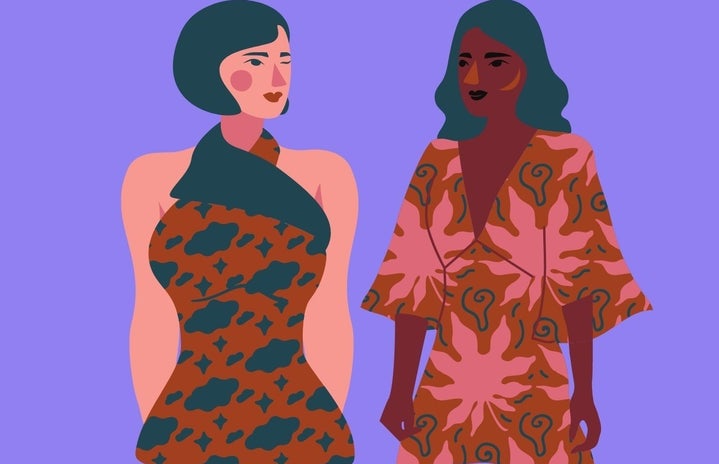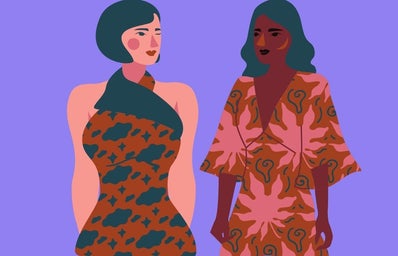In a society where fast fashion is the easiest and best way to shop for new, on-trend, in-season clothes, it is hard to see the negative footprint it is leaving on our planet. Even beginning to think about being sustainable while shopping for clothes is difficult; trust me, I know. I used to be a huge fast fashion buyer, using the Forever 21 app to catch sweet deals nearly every month. How could I resist? The clearance section was my best friend once I started buying my own clothes. There are so many aspects to look at, so why should we need to do additional research before going back-to-school shopping? The road to being sustainable gets a lot easier with just a bit of information, so let’s talk about sustainable fashion.
The first thing you need to know is that there is a humanitarian and environmental crisis in the fashion industry. Many of the most popular brands that you see Instagram models promoting left and right use sweatshops and child labor to make your favorite five-dollar crop tops. The women and children in these sweatshops aren’t even paid a living wage to churn out item after item for new collections that come about every two weeks. It’s exploitation, simple as that, and it is not okay. We, as shoppers, need to start caring more about who is making our clothes or shoes or purses, because it could very well be a kid that was robbed of their childhood.
We have to think about the environment, too. What is the fashion industry doing to the planet around you? Well, it’s responsible for 10 percent of all carbon emissions every year around the world. That means that, by 2030, the greenhouse gas emissions will be over 50 percent (The World Bank). The fashion industry is also the world’s second-largest water consumer due to the making and dying of clothes, and those clothes then leave hundreds of thousands of microplastics in the environment from just one wash cycle. Many toxic chemicals are used to make a single item of clothing, so imagine what that looks like for an entire collection.
If you didn’t know this information yet, that’s okay! I only started learning about this a couple of months ago, after my interest piqued during a lesson in my 20th-century fashion history class. The idea of sustainable fashion was only briefly touched on, so I started doing some basic research by myself. I found that many models in the industry actually advocate for sustainable fashion themselves, and stylists often try to find the best brands to minimize environmental harm in their workplaces. Like so many of these workers in the industry, forgive yourself! Being sustainable is hard and expensive when all you want to do is buy that five-dollar crop top with the corny saying on the front.
Being sustainable doesn’t mean giving up your favorite brands completely. There are tons of other ways to make the most of the clothes you own to help get rid of just a bit of our fashion footprint.
- Wear Your Clothes More Often
-
Wear your clothes more often. You can make so many outfits with one item of clothing just by getting creative. Go on Pinterest or Instagram and see what inspiration you can get by mixing and matching styles and colors. Mix tiny tops with baggy pants, mini skirts with baggy t-shirts, throw long sleeves under dresses. The possibilities are endless. Although it can be hard and intimidating, get out of your comfort zone!
- Make the Most of Apps
-
Download apps like Good On You. This one rates all of your favorite brands out of five stars based on their sustainability and ethics. If a brand that you like isn’t doing the best, it’ll recommend other, more sustainable brands to you that fall within the same price range.
- Upcyle Your Clothes!
-
This one is a personal favorite! Once again, Pinterest is a great way to get inspiration, and it can even tell you all of the supplies that you’ll need. You can get many of them at Walmart or a dollar store. Over the summer, I bleach-tie-dyed three t-shirts and made an open tank top with safety pins down the middle. My only supplies were bleach, scissors, rubber bands, and safety pins. Oh, and a thrift shop, of course, which brings me to my next suggestion.
- Go Thrift Shopping
-
It started as a trend (for whatever reason) a couple of years ago and is still popular now. Vintage stores and donation shops are a great way to find unique pieces for super cheap prices. You can even broaden your style horizons by doing decade pieces. You’re keeping those clothes out of landfills, and you might even find some fast fashion clothes.
- Donate Your Clothes
-
You can donate them just about anywhere. As an added bonus, Goodwill provides job opportunities to those in need in your community. Your friends may like the pieces that you’re totally over––I’ve personally had friends come raid what was left in my closet. Charities that are dedicated to the homeless or to children living in poverty are always looking for donations as well.
- Take Care of Your Clothes
-
Properly take care of your clothes so that they last longer. An even better way to ensure this is to shop for quality over quantity. One way to determine quality is, sadly, the price. A $50 pair of jeans is probably going to last you longer than the $15 jeans. Because of the extended lifespan of your jeans, you’ll end up spending less money over time by just buying one good pair.
- Bring a Tote Bag When Shopping
-
Last but not least–this one goes for general sustainability and is a practice to use outside of just clothes shopping–bring a tote bag with you to avoid plastic, non-recyclable bags. Some brands, like American Eagle, have taken the step to provide you with reusable shopping bags to bring back to the store when you go shopping again.


